Here in New York, we’re at that point in the summer when peppers – both hot and mild – have turned up in the farmers’ markets, but not yet at the moment when green peppers ripen and turn red. And it is red peppers that Jackie and I find most appealing: I use them even when tradition calls solely for green ones, as in my big annual batch of Hungarian-style lecsó.
In the meantime, we’re not neglecting the peppers heaped up in the market, such as the glossy black-green poblanos we bought last weekend. While it is foolhardy to make assumptions about the heat of any batch of capsicums, these tend to be mild, but with plenty of flavor, a slight prickle and a good level of bitterness; they’re a fine pepper to hold us over until green turns to red.
Their flesh is thin compared with that of standard bell peppers, and it seems natural to cut them into narrow strips – say, an eighth of an inch (a bit more than 3 mm) wide. The juicy young onions in the market may be similarly sliced, and this week I allowed that to determine the shape of pasta I used in our dinner. (Yes, more pasta with vegetables – take advantage of the season’s produce while you can!)
What I used for the usual two portions was 175 grams (just over six ounces) of trofie, a vermiform pasta from Liguria whose shape echoes the julienned vegetables. I bought mine in a bag, dried, but it is among those flour-and-water pastas you can make from scratch if you’re of a mind to (in this video by a Boston-based cooking teacher you can see a clever way to form them – and a few other shapes made from the same dough).
Once that important decision had been made, I blanched and peeled a ripe medium-sized tomato, diced it, placed it in a bowl with salt and a teaspoonful of good olive oil and set it aside. Then, I halved a medium new-season onion (sweet and juicy, though a regular one would be fine) and sliced it thin, putting it to sweat over low heat in olive oil with a whole peeled clove of garlic and a sprig or two of fresh mint. And salt, of course.
As the onion softened, I halved two poblano peppers lengthwise, removed the seeds and pith and sliced them thin. One of them was pretty hot, but that was no deterrent: by the time the dish was done and other ingredients added, the flavor would have softened. I added this to the onions and still over low heat continued to cook until the peppers were almost overcooked, with a very soft texture and intensified flavor. This took a quarter of an hour, but start checking after eight minutes.
The store-bought trofie would take twelve minutes to cook, in boiling salted water. When they were under way, I added the tomato and all its juice to the onion-pepper mixture, brought it up to the simmer and cooked it over medium-low heat for a couple of minutes. The aim was to concentrate its flavor a bit while retaining plenty of moisture.
When the trofie were not quite done, with the slightest hardness at the very core, I drained them and stirred them into the sauce, where they simmered until done, about 30 seconds. I needed to add some of the pasta-boiling water to keep everything moist; you probably will too.
Finally, I stirred in a good handful of fresh mint leaves, transferred the pasta to a warmed serving bowl and folded in a fistful of shredded ricotta salata – a cheese with marked but gentle flavor; extra cheese was brought to the table to top our individual portions. If you didn’t have ricotta salata, you could use grated pecorino here, but add it not by the fistful but by the tablespoon: it is much more assertive. Likewise, lacking fresh mint, you could use sage or parsley or basil.
This is a hearty yet still summery dish with a particular feel in the mouth: the long-cooked peppers develop a seemingly mucilaginous texture that binds and lubricates all the elements. But because of the tomato and pasta water, the pasta never grows cludgy.
And yes, this will work with other not-hot peppers: regular bell peppers of any color or so-called frying peppers would be delicious – so long as you cook them long enough for their flavor and texture to become intense. The trofie can be replaced by cavatelli or indeed by another short shape of dried pasta, though the latter will not be quite the same either visually or on the tongue.
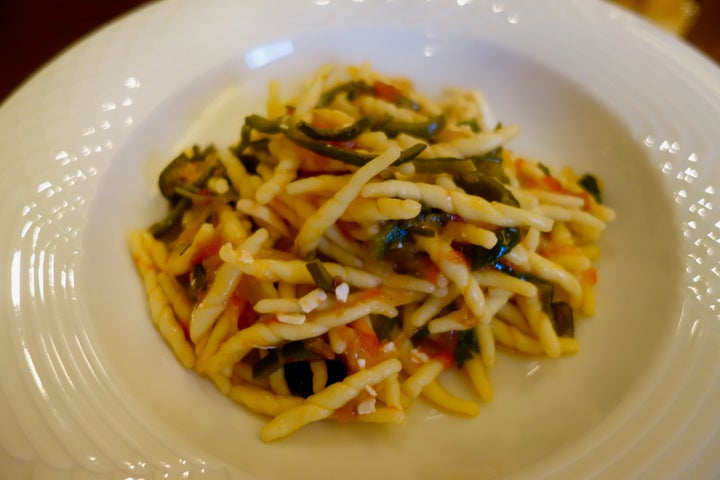
Trofie with poblano peppers
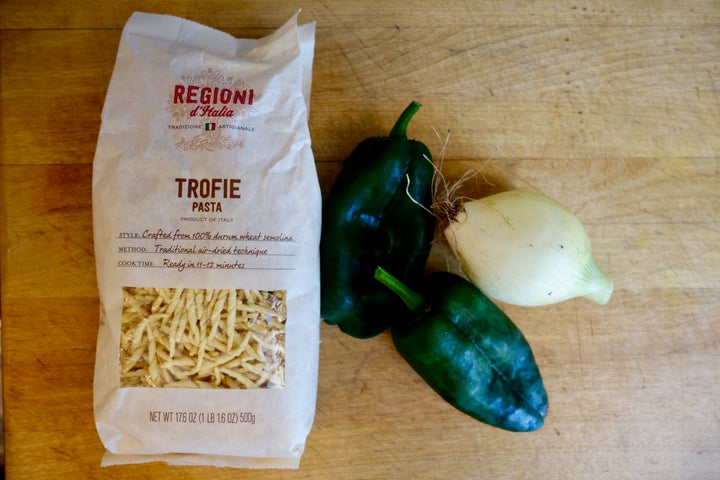
Trofie pasta and its main accompaniments

A chopped peeled tomato will add savoriness and moisture
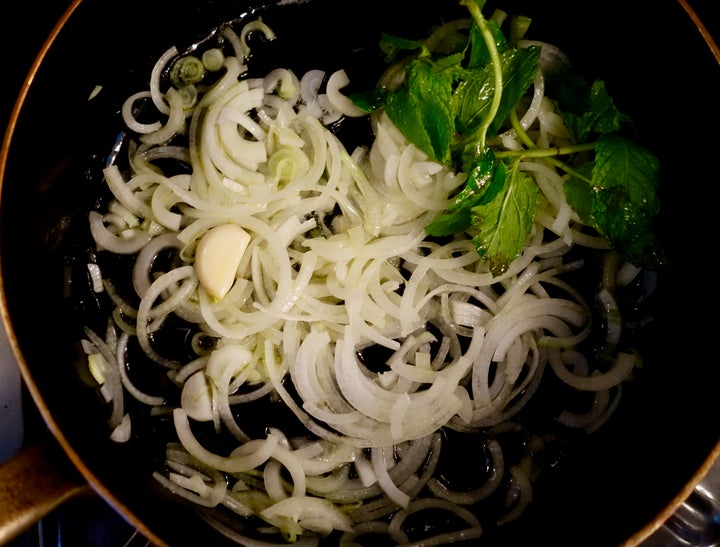
Flavor the onion with a clove of garlic and some mint
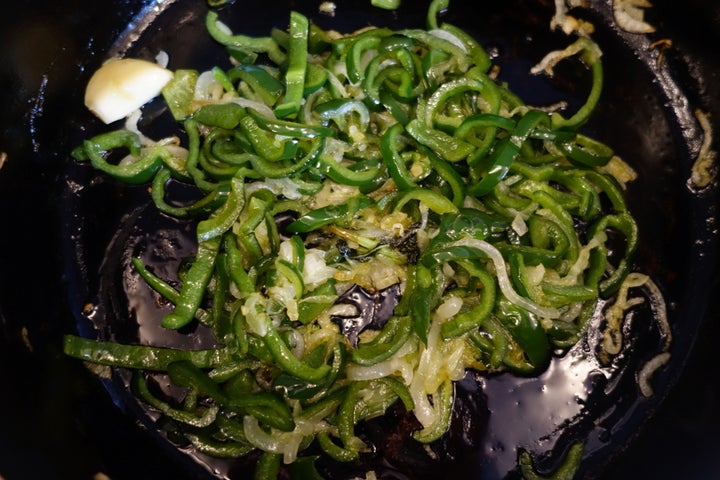
Two poblano peppers go in when the onions are getting soft

That chopped tomato goes in once the vegetables are thoroughly cooked
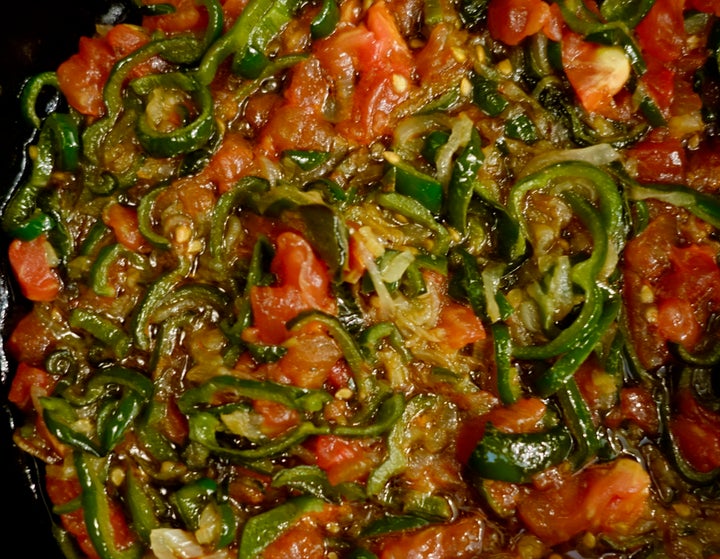
Then the tomato is cooked down for a couple of minutes
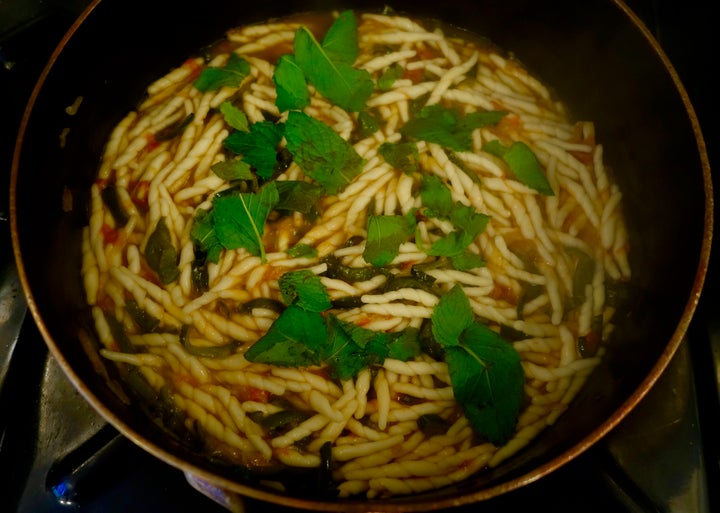
Just before serving, plenty of mint leaves
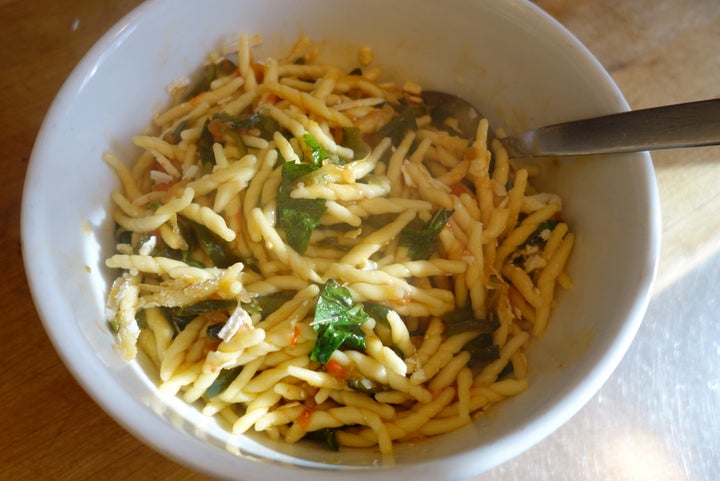
Stir in a handful of coarsely grated ricotta salata and it’s ready to serve